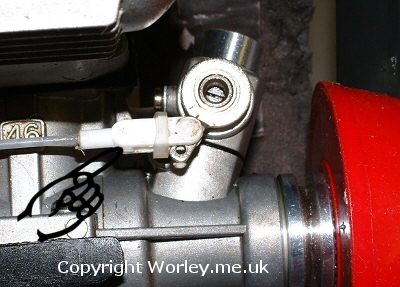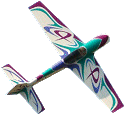Interference Free Engine Connection
 |
A friend of mine built a 'Capish'. We range
checked it before it's first flight (with and without the
engine running) everything was as it should be.
He taxed out, and took off, as soon as the plane got airborne
it started twitching,
and on the downwind leg of the circuit it flipped inverted
all by it's self, he was extremely lucky to get it back on
the ground in one piece. |
He changed the Rx
crystal, the same thing happened. He changed the receiver
, and the problem was still there... OK on the ground, but
as soon as it got it in the air, all hell broke loose.
I then asked if if he had any 'metal-to-metal' joints. It
turned out he had fitted a metal clevice
to the metal throttle arm on the engine. As soon as the aircraft
left the ground this caused a resonance vibration between
the metal clevice
and the metal throttle arm. Any two metals touching/vibrating
together produces small amounts of RFI (Radio Frequency Interference)
which causes your model to 'twitch'
and it was these two metal surfaces vibrating together that
was causing his model to behave in the way it did.
Safe flying is no accident! |
| Tip
Use a thin sliver of silicon fuel tubing on the clevice to
ensure it stays in place. |
| Tip
Use a piece of PVC electrical insulation tape on all servo
lead extensions joints to ensure they do not come apart during
flight (you can just see an example at the top of the picture) |
|
|

